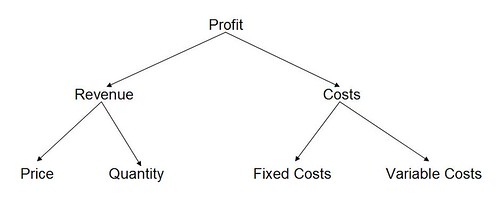As you probably know, Jack Kevorkian, the retired physician who advocated assisted suicide, whereupon he assisted several people’s suicides; he did so on the belief that diseases such as cancer or other illnesses that greatly affected the person’s quality of life were better off dying than continuing to live a bare existence. Well, Jack Kevorkian died today at age 83.
This post is not about assisted suicide or of the ethics around such as topic, but the proper noun “Jack Kevorkian” can be used as a metaphor for how not to unknowingly assist in the killing of our own lean and six sigma transformations. So, this post is how not to kill the lean and six sigma transformations in our companies.
1. Don’t Have Leadership Support
While a lean transformation could become successful without top leadership support, it sure helps to have it; especially if the top leadership behaves and speaks the language that demonstrates complete buy-in. Heck, it would even help a lot if the top leadership showed, by example, the completion of an A3 to show the rest of the troops how to solve problems using the A3 Thinking Framework.
If you don’t have leadership support, then it’s important that you pay even more attention to the section below on Measuring Results.
2. Ignore Strategic Alignment
We can’t just pick any old process to work on. It’s important that we align our lean efforts to what is important to the company; even more, it’s important that there’s nested alignment from top-down all the way to your manager. And, make sure that what you work on or what you apply the worldview and tools of lean and six sigma are aligned to what is important to your manager. Otherwise, you won’t get much attention or support.
For example, ask the following questions to test alignment:
- If I’m successful in the area I’m working in, will my manager be successful also?
- What metrics is my manager responsible for? Is there a project that affects those metrics?
Formally, strategic alignment in lean is called Hoshin Kanri or Policy Deployment.
3. Don’t Respect People
Much of what we do in a lean transformation is teach, coach, and then teach and coach some more. If we do so and not show respect to those whom we are coaching and teaching, then no matter how good of a lean expert or six sigma practitioner you are, you won’t have much influence.
So, unless you want to Jack Kevorkian your lean six sigma efforts, show respect to those you are working with.
4. Don’t Bother to Measure Results
As with most lean transformations, we’re dealing with many, many small rocks, not just a few big rocks. As such, it’s important that we measure locally. You know, PDCA.
This becomes even more important if you don’t have leadership support. What leadership will be looking for is “proof” that this stuff works. In other words, they are looking for results. To show results, you must measure. But not just any result, you must show results in areas that matter to the people looking for proof. So, it’s important that you align your efforts.
5. Don’t Communicate Results
Even if there are positive results for lean efforts, it’s not good enough if those results aren’t communicated. So, you must communicate the results in several ways:
- Communicate results visually – this can be done using an A3.
- Communicate results orally – this can be done by speaking with groups about the projects and results; but, it’s important that you share the story: the problem, current conditions, what the team did, root cause analysis, countermeasures, and results. Tell the story and have some drama. Emotion will help keep things memorable and touch the heart and the mind.
- Communicate using language of lean – yes, as simple as this sounds, it’s important that you begin using – and others begin using – the language of lean such as “root cause analysis“, “pareto“, etc. Doing so will create a subtle but important change in the company. Failure to do so will help in the Jack Kevorkian of your lean transformation.
Conclusion
Of course there are more, but these are just a few of the success factors that you must remember in order not to unknowingly kill your lean six sigma efforts. If you ignore these, then you could be a culprit in the assisted suicide of your lean six sigma efforts.
Become a Lean Six Sigma professional today!
Start your learning journey with Lean Six Sigma White Belt at NO COST






Leave a Reply